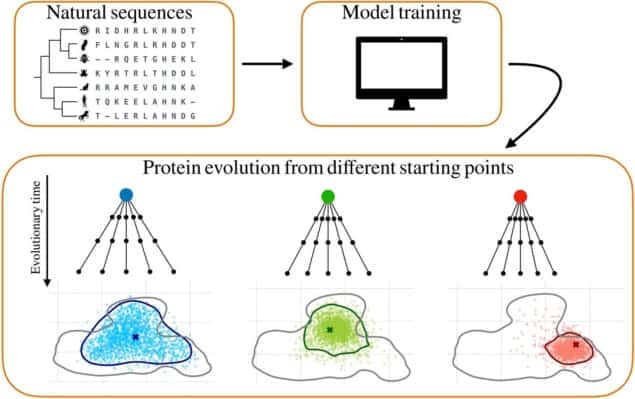Protein evolution plays a key role in many biological processes that are essential for life – but what does it have to do with physics?

Proteins are made up of a sequence of building blocks called amino acids. Understanding these sequences is crucial for studying how proteins work, how they interact with other molecules, and how changes (mutations) can lead to diseases.
These mutations happen over vastly different time periods and are not completely random but strongly correlated, both in space (distinct sites along the sequences) and in time (subsequent mutations of the same site).
It turns out that these correlations are very reminiscent of disordered physical systems, notably glasses, emulsions, and foams.
A team of researchers from Italy and France have now used this similarity to build a new statistical model to simulate protein evolution. They went on to study the role of different factors causing these mutations.
They found that the initial (ancestral) protein sequence has a significant influence on the evolution process, especially in the short term. This means that information from the ancestral sequence can be traced back over a certain period and is not completely lost.
The strength of interactions between different amino acids within the protein affects how long this information persists.
Although ultimately the team did find differences between the evolution of physical systems and that of protein sequences, this kind of insight would not have been possible without using the language of statistical physics, i.e. space-time correlations.
The researchers expect that their results will soon be tested in the lab thanks to upcoming advances in experimental techniques.
Read the full article
Fluctuations and the limit of predictability in protein evolution – IOPscience
S. Rossi et al, 2025 Rep. Prog. Phys. 88 078102
